This post may contain affiliate links. Please read my privacy policy.
Beef rendang is a spicy, rich, and creamy Indonesian/Malaysian beef stew made with beef, spices, and coconut milk. This is the best and most authentic beef rendang recipe you will find online!
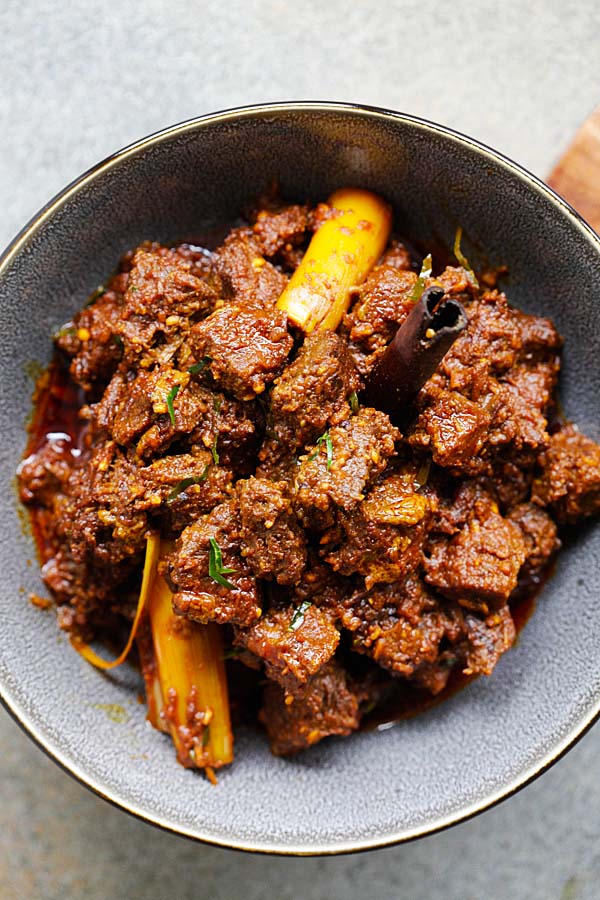
Table of Contents
- Authentic Beef Rendang Recipe
- Origins Of Rendang
- Beef Rendang Ingredients
- Secret Ingredient Of Rendang Paste
- Recipe Variations
- How To Make Beef Rendang
- Make The Best and Most Authentic Rendang
- Frequently Asked Questions
- What To Serve With Rendang
- Other Malaysian Recipes You Might Like
- Beef Rendang (The Best!) Recipe
Authentic Beef Rendang Recipe
Rendang is one of my all-time favorite dishes. This rich and tender coconut beef stew is famous for its intense, complex flavors. Known as rendang daging in Indonesia and Malaysia, it’s arguably the most iconic beef recipe in both countries, and even in Singapore to some extent.
Fun fact: it’s also ranked as the #1 dish on CNN’s World’s 50 Best Foods list! Over the years, as more chefs attempt to recreate beef rendang, the dish has sparked its fair share of debates over the “right” recipe and cooking techniques.
One of the most famous controversies happened in 2018, when a MasterChef UK judge criticized a Malaysian-born contestant’s rendang for not being crispy. The comment caused a massive uproar on social media, with many Asians pointing out that rendang isn’t meant to be crispy. It’s a rich, tender stew, not a fried dish!
Traditionally, the protein in rendang is never deep-fried. Instead, it’s simmered and stewed for hours with aromatic spices and coconut milk until the meat becomes meltingly tender and deeply flavorful.
If you’ve never tried it, I highly recommend making this Malaysian beef rendang. Don’t forget to check out my step-by-step video to guide you through every step of the process—it’s easier than you think! You’ll love having bowls of spicy, creamy, and tender beef stew to savor for days. This is the most authentic beef rendang recipe online, with over 700 glowing reviews and an average rating of 4.6!
“I never send in reviews for anything. But I felt moved to do it for the first time ever. This recipe is so delicious. I’ve spent a lot of time in Malaysia and this definitely brings back happy memories.”
– Arun
Origins Of Rendang
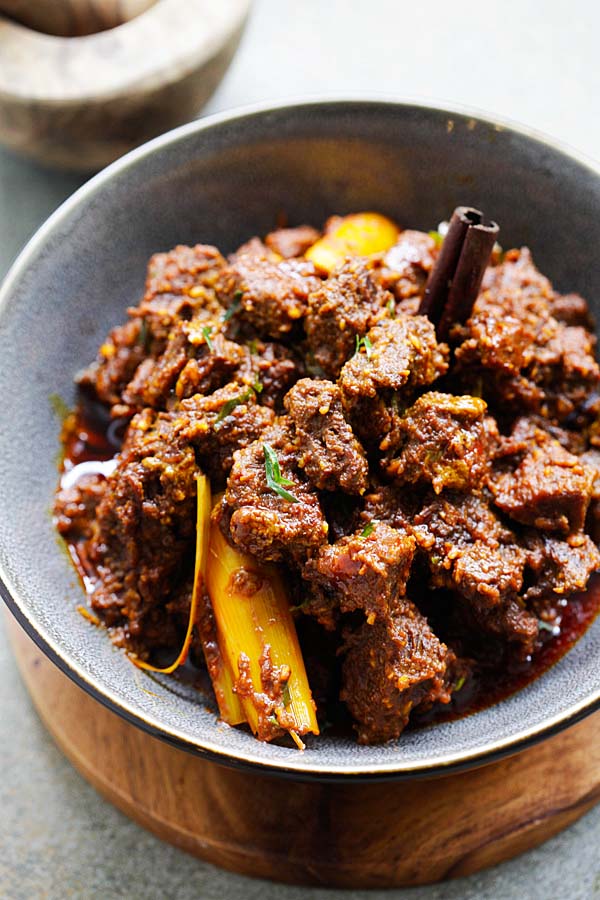
Beef rendang originates from Indonesia and is a beloved dish of the Minangkabau ethnic group. This rich and flavorful stew is more than just a meal—it’s a cultural treasure, often served at ceremonial occasions to honor guests and mark special celebrations.
I believe rendang made its way to Malaysia when the Minangkabau settlers from Sumatra migrated to the southern Malay Peninsula during the Melaka Sultanate era. Malaysians, especially the Malay community, adore rendang just as much, and it’s now a staple in their cuisine.
Beef Rendang Ingredients
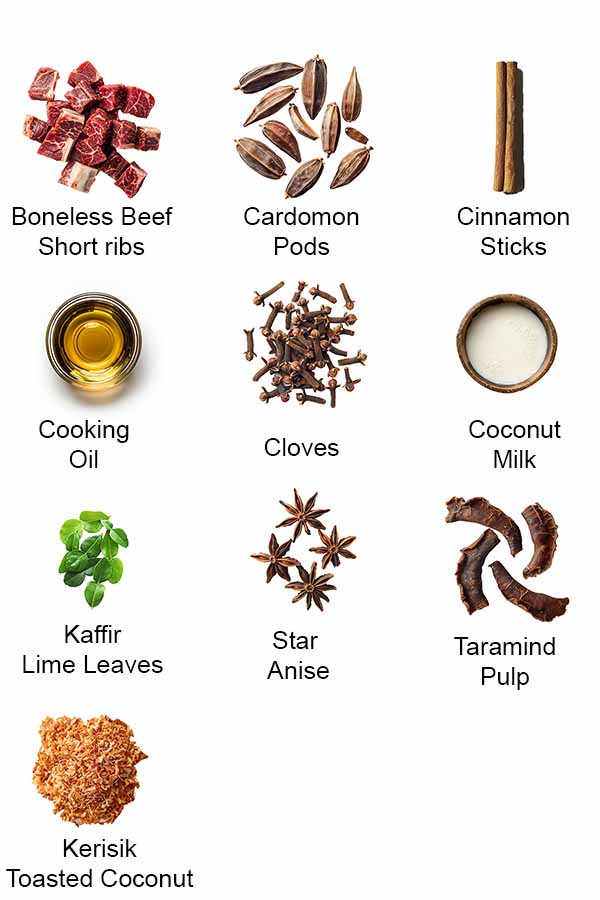
Main Ingredients
The core of beef rendang is the spice paste, as well as the various aromatic spices: cinnamon, cardamom pods, cloves, and star anise). Here are some of the main ingredients, including what you will need for the spice paste:
- Boneless beef short ribs – this is the best cut of beef for this recipe. Make sure to cut the beef into cubes. Make sure you don’t cut it too small as the meat might break apart after cooking.
- Coconut milk – if you like a creamier and richer taste, opt for coconut cream, which is thicker in consistency compared to coconut milk.
- Kaffir lime leaves – impart the iconic flora aroma and perfume the dish with citrusy fragrance. I recommend buying fresh leaves to get more of that citrusy flavor. They freeze really well, so you can buy a bunch and keep them in the freezer to use in Tom Yum Soup, Sambal Udang, and Beef Penang Curry.
- Spices – I use fresh cinnamon, cloves, star anise, and cardamom, but you can also use the powdered version.
- Tamarind juice – the tart tamarind balances out the richness of the coconut milk. I use tamarind pulp soaked in warm water, but you can also use tamarind puree.
- Kerisik – toasted grated coconut gives the dish a nutty and earthy flavor.
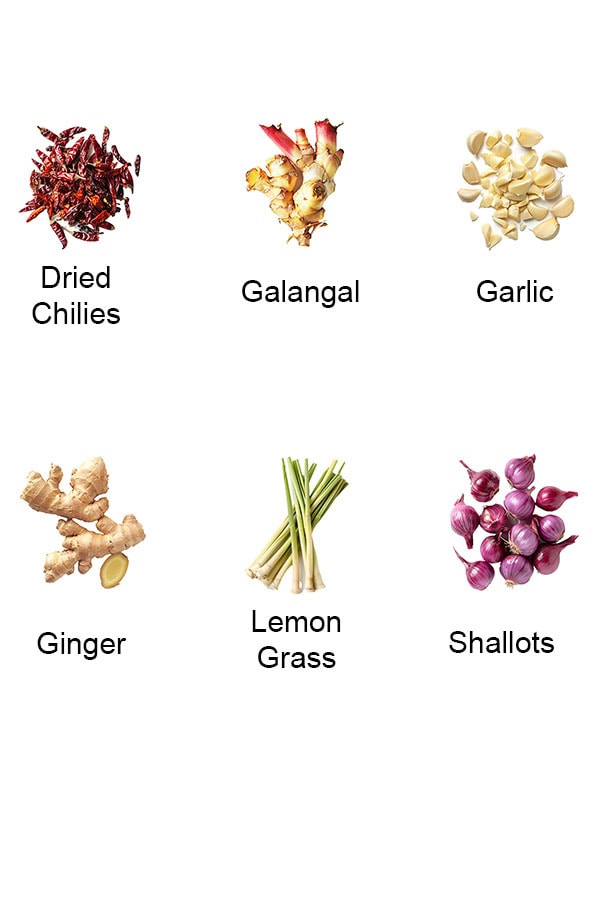
Rendang Spice Paste Ingredients
- Dried chilies – add as much or as little as you like depending on preference. You can use half the amount in this recipe for a milder stew.
- Galangal – if you cannot find galangal, skip it altogether. It tastes like ginger but it is more sour and peppery.
- Lemongrass – use only the white part, slice thinly. Smash them a little bit using the back of your knife to infuse more flavor into the dish.
- Shallots
- Garlic
- Ginger
See the recipe card for full information on ingredients.
Secret Ingredient Of Rendang Paste
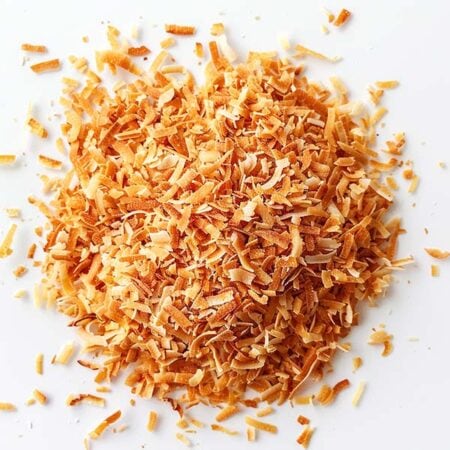
To make the best beef rendang, you need to have the secret ingredient kerisik or toasted coconut. Many traditional Indonesian and Malaysian recipes call for kerisik. This golden-toasted shredded coconut adds immense aromas, earthy nuance, and vibrant textures to the finished dish.
Expert Tip #1: My late grandmother taught me the technique of pounding the kerisik using a traditional stone mortar and pestle. This process breaks down the fiber in the toasted shredded coconut and releases the fat contents in the toasted coconut. When adding pounded kerisik to the list of ingredients, you will have the richest, creamiest, and “lemak” (meaning “fat” in Indonesian-Malaysian language) rendang ever!
Expert Tip #2: Another technique is to slow-cook the meat on low heat, preferably over a charcoal fire, in a clay pot, and cover it with its lid. In the modern-day kitchen, you can just use a pan or pot to slowly stew and simmer the beef and reduce the liquid during the cooking process. You’ll get the most tender and melt-in-your-mouth soft meat ever!
Recipe Variations
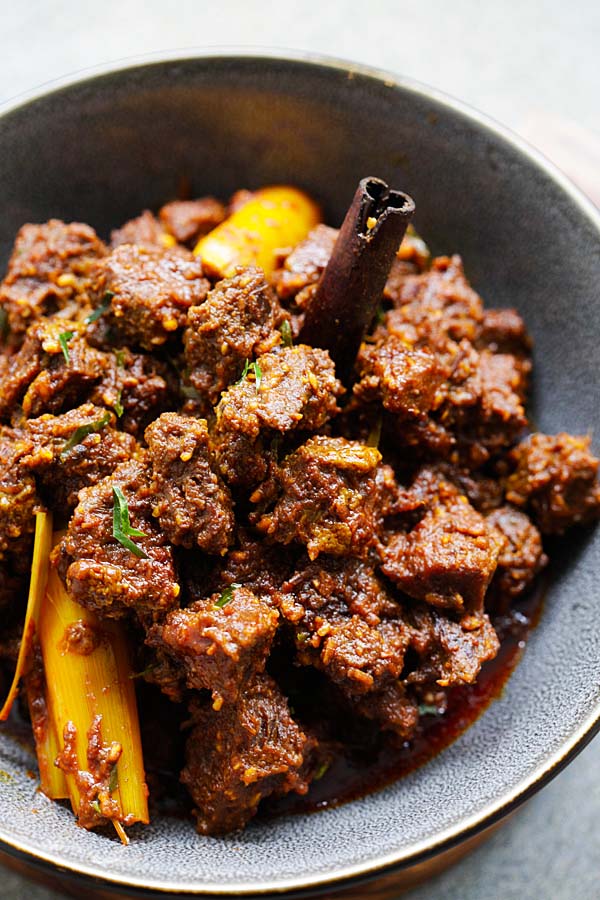
While beef rendang is the poster child, there are other variations such as chicken rendang and lamb rendang that are equally delicious. Chicken rendang is often used as a filling in baked buns, and it is an all-time favorite of locals.
For vegans and vegetarians, you can certainly use fried tofu or tempeh. For seafood lovers, rendang prawn (shrimp) is a good option.
Regardless of which protein you use, slow-cooked beef rendang is absolutely delicious and best with steamed rice like nasi lemak.
How To Make Beef Rendang
Beef rendang, or any beef stew, is a labor of love, as it requires patience and time to achieve the perfect balance of flavors. Here’s how to make rendang the traditional way:
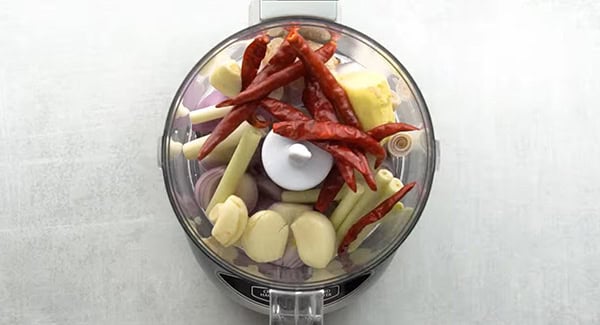
First, chop up the spice paste ingredients, then blend them in a food processor until they’re nice and fine.
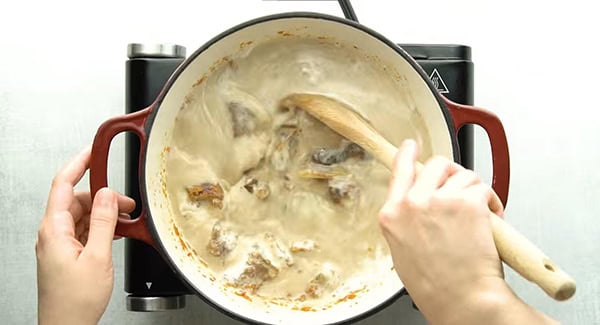
Heat some oil in a stew pot, then toss in your spice paste, cinnamon, cloves, star anise, and cardamom. Stir-fry them until everything is really fragrant. Add the beef and the pounded lemongrass, then stir it all together for about a minute.
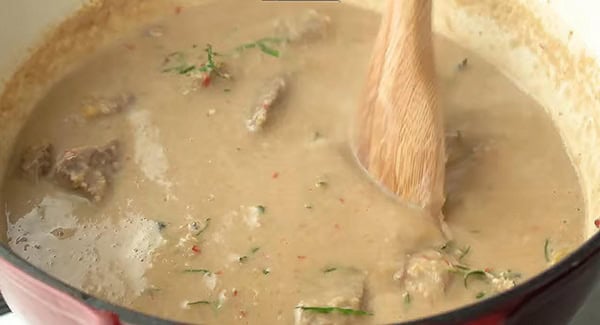
Next, pour in the coconut milk, tamarind juice, and water. Let it simmer on medium heat, stirring frequently, until the meat is almost cooked. Now, throw in the kaffir lime leaves, kerisik (toasted coconut), sugar, or palm sugar. Stir it all together until it’s well blended with the meat.
Pro tip: To make the kerisik, just toss some grated coconut into a dry wok and stir it continuously until it turns golden brown. It’s super easy, but you’ve got to keep an eye on it so it doesn’t burn!
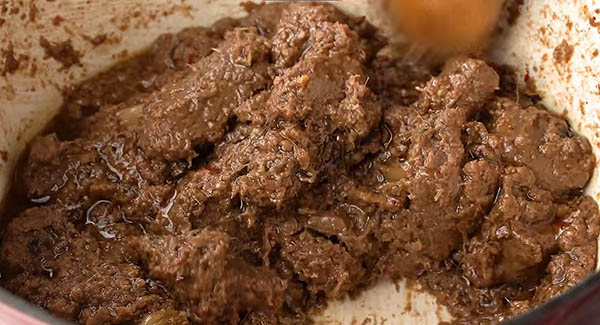
Reduce the heat to low, cover the pot with a lid, and let it simmer for 1 to 1 1/2 hours, or until the meat is super tender and the gravy has thickened up nicely. Taste and adjust with more salt or sugar if needed.
Serve it hot with steamed rice, and save any leftovers for later—this dish gets even better the next day!
Make The Best and Most Authentic Rendang
The best and most authentic meat rendang should be somewhat dry (as pictured here). Please take note that this is not a curry, and the dish should never be watery like this Panang Curry. The meat should be generously coated with the rendang paste.
I suggest you make a big serving (you may double or triple this recipe), so you have some leftovers. The flavors and aroma become more intense the next day that some prefer to wait and eat it on the second day. In fact, the Minangkabau saves the dish for months as the complex taste and flavor develop over time.
Frequently Asked Questions
I use boneless beef short ribs or stew beef. These cuts have a good meat-to-fat ratio that makes rendang so tender and flavorful. Cut the beef into smaller chunks to ensure that each chunk is tender and nicely coated with the aromatic rendang curry paste.
Rendang is a dry meat stew with a thick, flavorful gravy that is cooked until the meat is tender and infused with flavors and almost all of the liquid has evaporated.
No, rendang and curry are two different dishes. Rendang is a type of dry, slow-cooked meat dish while curry like this beef curry with pumpkin is a wet or semi-wet stew. The spices and ingredients used in the dishes are also different with rendang having unique flavors from coconut milk, kerisik (toasted coconut), kaffir lime leaves, and galangal.
Yes. After sautéing the spice paste and aromatics on the stovetop, transfer everything (including the beef, coconut milk, tamarind juice, and water) into your slow cooker. Cook on low for 7–8 hours or high for 4–5 hours until the beef is tender and the sauce has reduced. Stir in the kerisik and kaffir lime leaves during the last hour so the flavors stay fresh and nutty.
Yes. Use the Sauté function to cook the spice paste and aromatics first. Add the beef, coconut milk, tamarind juice, and water. Pressure cook on High for 35–40 minutes, then do a natural release. After that, switch back to Sauté and simmer to reduce the gravy until thick and clingy. Stir in the kerisik and lime leaves at the end for that signature rendang flavor.
It keeps well in an airtight container for up to 4 days. To reheat, warm gently on the stove with a splash of water if it looks a bit dry.
Yes, the gravy naturally thickens and the flavors deepen as it rests. Add a little water or coconut milk when reheating to loosen it up if needed.
Definitely. Once cooled, portion it into freezer-safe containers or zip-top bags. It’ll keep for up to 2 months. When ready to eat, thaw in the fridge overnight and reheat on the stove until piping hot.
This beef rendang recipe has 795 calories per serving.
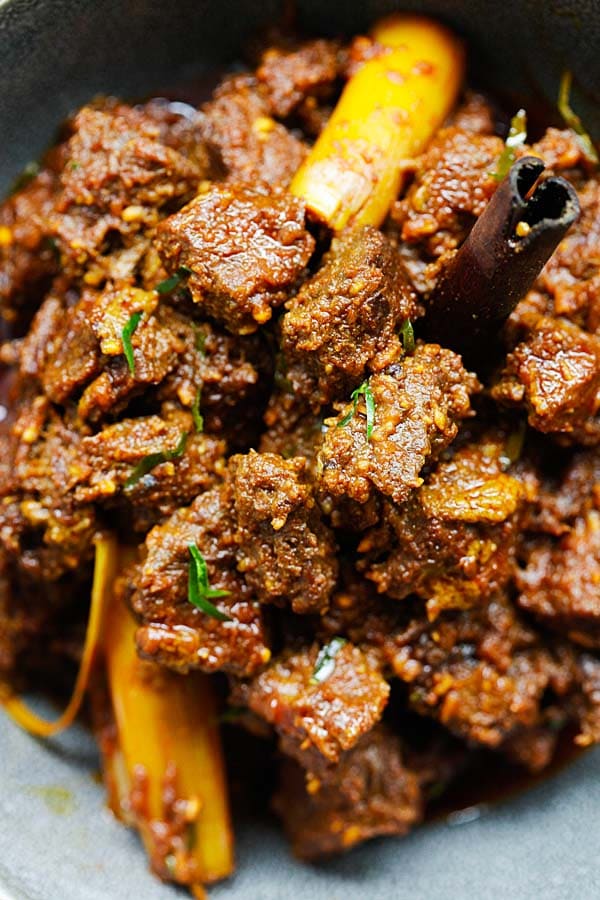
What To Serve With Rendang
Serve this Malaysian beef rendang with rice, noodles, or bread. For an easy and traditional Malaysian weeknight dinner, I recommend the following recipes:
I hope you enjoy this post as much as I do. If you try my recipe, please leave a comment and consider giving it a 5-star rating. For more easy and delicious recipes, explore my Recipe Index, and stay updated by subscribing to my newsletter and following me on Facebook, Pinterest, and Instagram for new updates.
Other Malaysian Recipes You Might Like
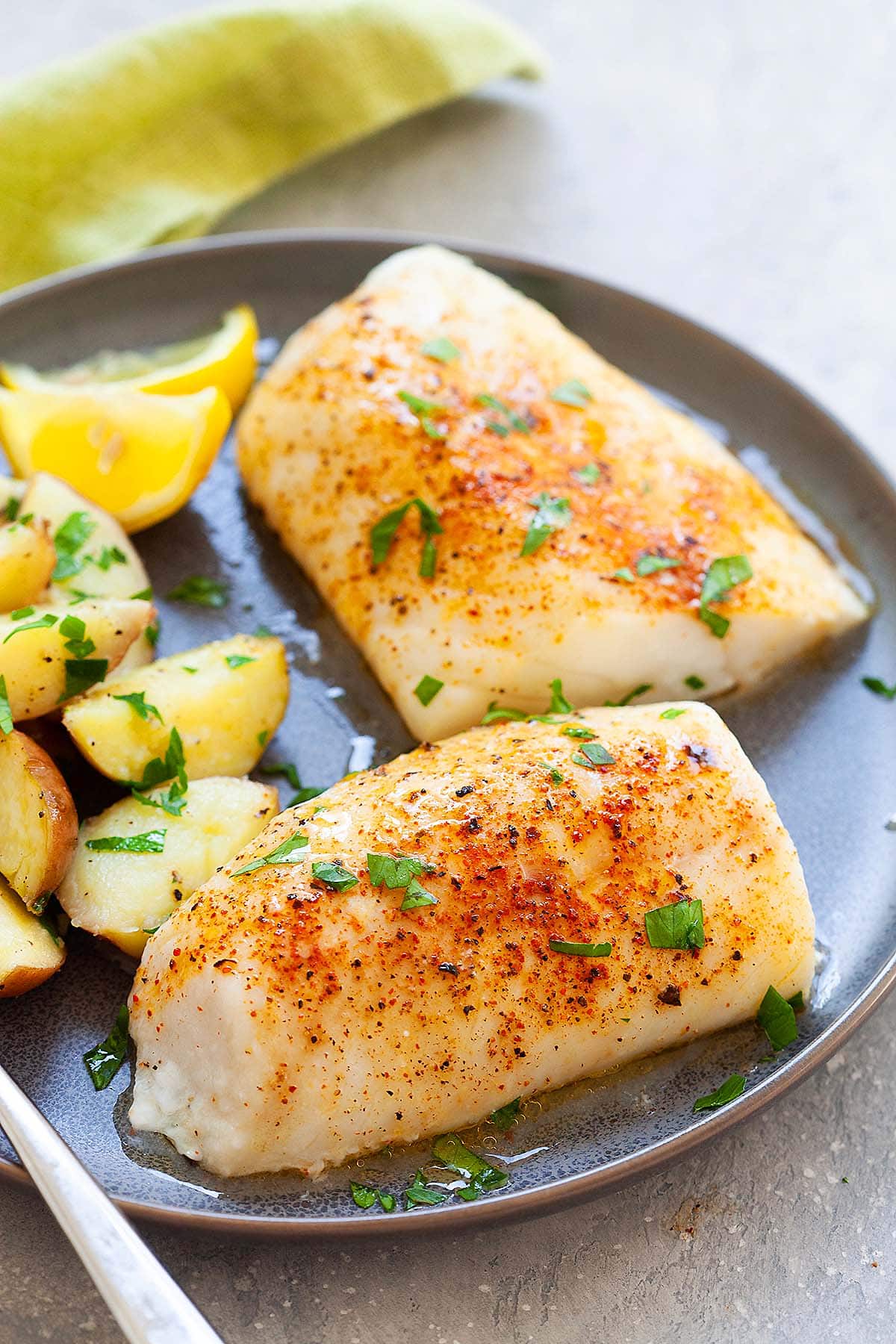
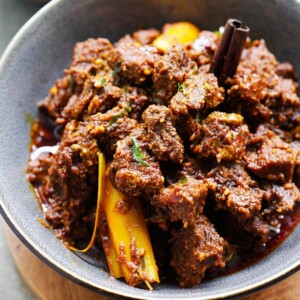
Beef Rendang (The Best!)
Ingredients
- 1 1/2 lbs. boneless beef short ribs, cut into cubes
- 5 tablespoons cooking oil
- 1 stick cinnamon, about 2-inch length
- 3 cloves
- 3 star anise
- 3 cardamom pods
- 1 lemongrass, cut into 4-inch length and pounded
- 1 cup thick coconut milk , coconut cream
- 1 cup water
- 2 teaspoons tamarind pulp, soaked in some warm water for the juice and discard the seeds
- 6 kaffir lime leaves, very finely sliced
- 6 tablespoons kerisik , toasted coconut
- 1 tablespoon sugar , or palm sugar to taste
- salt , to taste
Spice Paste:
- 5 shallots
- 1 inch galangal
- 3 lemongrass , white part only
- 5 cloves garlic
- 1 inch ginger
- 10-12 dried chilies, soaked in warm water and seeded
Instructions
- Chop the spice paste ingredients and then blend in a food processor until fine.
- Heat the oil in a stew pot, add the spice paste, cinnamon, cloves, star anise, and cardamom and stir-fry until aromatic. Add the beef and the pounded lemongrass and stir for 1 minute. Add the coconut milk, tamarind juice, water, and simmer on medium heat, stirring frequently until the meat is almost cooked.
- Add the kaffir lime leaves, kerisik (toasted coconut), sugar, or palm sugar, stirring to blend well with the meat.
- Lower the heat to low, cover the lid, and simmer for 1 to 1 1/2 hours or until the meat is really tender and the gravy has dried up. Add more salt and sugar to taste. Serve immediately with steamed rice and save some for storage.
Video
Notes
- I recommend buying fresh kaffir lime leaves to get more of that citrusy flavor. They freeze really well, so you can buy a bunch and keep them in the freezer for later.
- To prepare the kerisik or toasted coconut, just add the grated coconut to a dry wok and stir continuously until it turns golden brown.
- Pound the kerisik using a traditional stone mortar and pestle to break down the fiber in the coconut and release its fat content in the dish.
- Slow-cook the meat on low heat, preferably over a charcoal fire, in a clay pot, and cover it with its lid.
- I suggest you make a big serving (you may double or triple this recipe), so you have some leftovers.
- Watch the cooking video for a step-by-step guide.
Nutrition
Nutrition information is automatically calculated, so should only be used as an approximation.
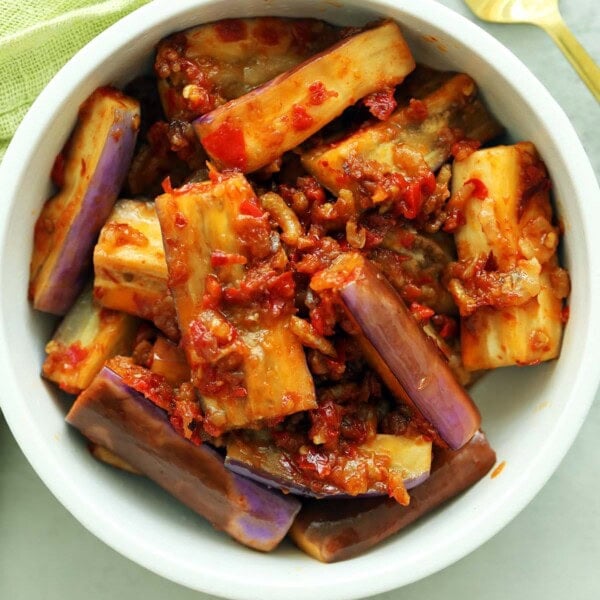
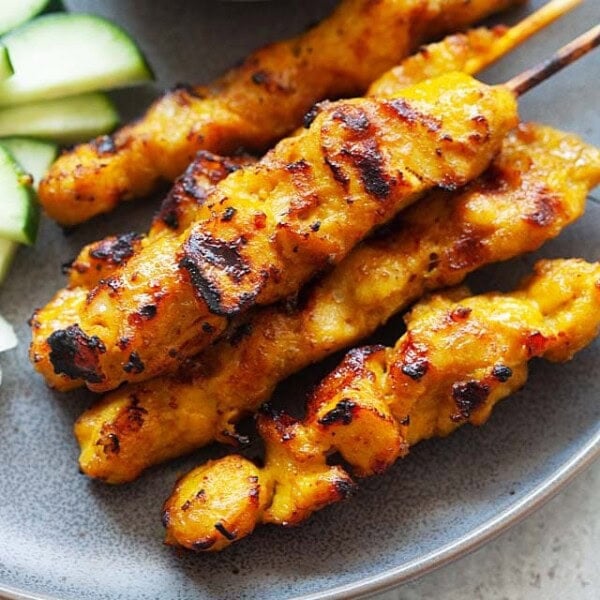
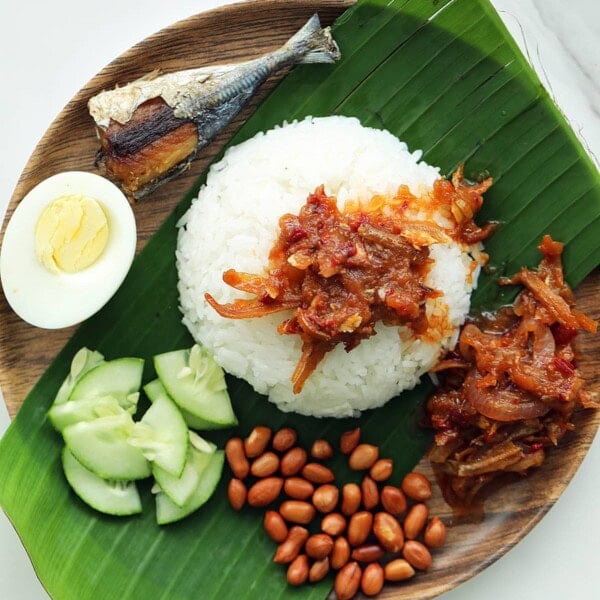
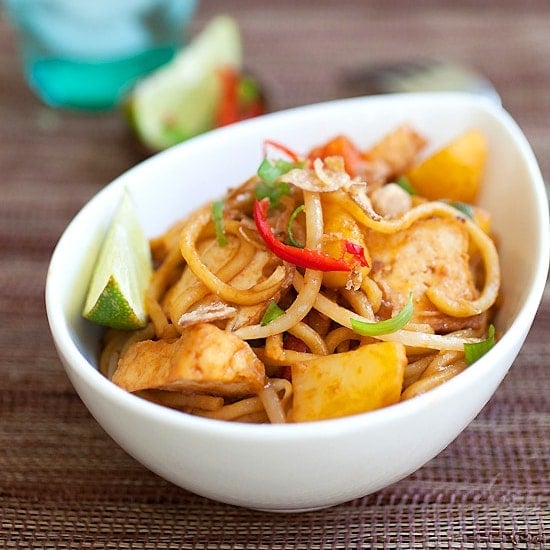






I found this recipe by chance when looking for something different to try cooking for Christmas dinner. There are a good number of Indonesians who live in my town in Taiwan, so it wasn’t difficult to get the ingredients at local markets here. I made it today (Merry Christmas!) and it’s wonderful; the combination of flavors is so delicious! I can only imagine how much better it would taste prepared by someone with experience, but for my first time it came out really tasty. Thanks for making this recipe available.
Thanks Stephen, thanks for trying this beef rendang recipe. Please try more recipes on my site: https://rasamalaysia.com/recipe-index-gallery/
Thanks a lot for recipe.
Thanks for trying my beef rendang recipe.
This is a beautiful and probably medicinal curry. I have taken a chili’s off to create a milder version. It is delicious, whilst cooking some cuts on my hand stung and then the harmonised into a wonderful chi feeling, a beautiful heat sensation. Thanks this will be cooked again!
Awesome Chris. This beef rendang is very yummy!
Everyone loved this dish and paired well with Acar Awak. Will do this again!
Richard
Awesome thanks for trying.
Hi,
This looks so good, After going through a bunch of rendang recipe’s on the net, I decided to make this one but I will be making 4 kgs of it.
would u say x4 of all the ingredients will get the same results? Also would x4 chilli be too much?
Yes might be too spicy, you can cut down to 3, or less than 3. :)
Thank you for the quick reply :)
After a visit to Malaysia (best food EVER!) and trying some of your other recipes, can’t wait to try this for my friend’s birthday cook off! Stupid questions: do you leave the cardamon pod whole or crush to use the tiny pods inside? And as I’m in the UK it’s hard to get hold of fresh coconut. Can dessicated/dried be used and toasted?
Whole. Yes, you can use dessicated coconut.
Thanks so much :)
Tried it tonight and followed the recipe. I just did not have that type of beef cut so had to replace it with flank steak. It was absolutely DELICIOUS! I will make it again and again because it was so easy too! Thank you for sharing!
Hi Rhian, thanks for trying my beef rendang recipe!
Making it over weekend for 3 friends. Think it’s gonna be great in my slow cooker!
Awesome!
Never had this dish so it was a bit challenging and I don’t know how authentic it tasted but it was OMG so good! The flavors are simply sensational! Thank you for the recipe, it is now in my home cook book :)
Hi Lara, this is a very authentic recipe I am very glad you tried my beef rendang.
Have used ginger instead of galangal …. tastes just great :)
Ginger tastes god in the Rendag, but galangal is a homeopathic medicine as well, and has a different effect than ginger.
Very nice. Love it.
Hi there can i replace tamarind with anything else?
No.
I’m planning on cooking this recipe next weekend. My question is can this recipe be adapted for slow cooker easily?
Yes you can make beef rendang in a slow cooker.
I very love rendang, and hoping world know how delicius this food.
rendang is the delicius food in the world,
hip hip horay hip hip horay
great to know rendang as most delicius food in the world by CNN version. And i can find the recepies here.. thanks you darling
Prepped this tonight along with your chicken satay and peanut sauce to cook tomorrow for date night. Used tamarind paste, slightly worried it may not work out great because of that but will see tomorrow :)
Good luck, let me know how it goes with your beef rendang.
Hi Mark, how’d you go using the paste as opposed to soaking puree? I am curious myself, as it’s a lot of effort if this is mistake..
I use a teaspoon of tamarind paste and a teaspoon of powdered galangal in this recipe, and after preparing the curry sauce, I slow cook beef cheeks. Then I pull the beef, reduce the sauce, and then mix with the beef, and bake to “dry” it out – delicious!
Hi Tim, sounds very yummy!
What kind of Chili’s did you use?
Dried chili.